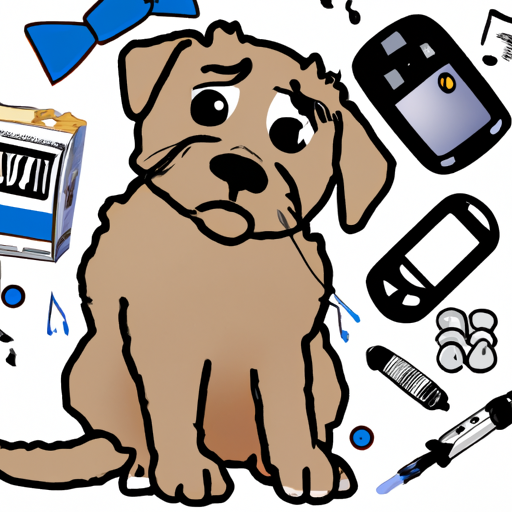As a caregiver, it’s crucial to be aware of the health concerns that could potentially affect your puppy. One such concern is diabetes, a condition that, while often associated with humans, can also impact our canine friends. In this comprehensive guide, we will explore the symptoms of puppy diabetes to help you ensure your furry friend’s health and happiness.
** Understanding Puppy Diabetes**
Diabetes in puppies is a condition where their bodies either don’t produce enough insulin or can’t effectively use the insulin they do produce. Insulin is critical for helping the body use sugar from the bloodstream. When this process is impaired, it can lead to high blood sugar levels, resulting in diabetes.
** Recognizing the Early Signs**
It’s important to catch diabetes early to prevent more serious health problems. Here are the top five symptoms that you might notice:
- Excessive thirst: Puppies with diabetes might drink water excessively and still seem to be thirsty.
- Increased urination: Due to high sugar levels in their blood, they might urinate more frequently.
- Increased appetite: Despite eating more, they might still appear hungry.
- Weight loss: Even if eating more than usual, they might lose weight.
- Lethargy: They might seem unusually tired and have less energy for play.
** Physical Changes to Look For**
Aside from observable behavior, physical changes can also indicate diabetes.
- Cloudy eyes: Diabetes can cause cataracts, resulting in a cloudy or foggy appearance to the eyes.
- Thinning hair or bald patches: Diabetes can affect hair growth, leading to thinning hair or bald patches.
- Skin infections: Puppies with diabetes are more susceptible to skin infections.
** Complications if Left Untreated**
If diabetes in puppies goes untreated, it can lead to serious health complications:
- Kidney disease
- Heart disease
- Vision loss
** Diagnosis and Treatment**
Early diagnosis is crucial to manage diabetes in puppies. If you suspect your puppy might have diabetes, consult a veterinarian. They may perform various tests, such as a blood glucose test, to confirm the diagnosis.
Treatment usually involves insulin injections and a special diet. Regular exercise can also help manage the condition.
** Preventing Puppy Diabetes**
While there’s no surefire way to prevent diabetes, certain measures can help reduce the risk:
- Maintain a healthy weight: Overweight puppies are at a higher risk of developing diabetes.
- Regular exercise: Regular physical activity can help maintain a healthy weight and increase insulin sensitivity.
- Balanced diet: A diet high in fiber and low in fat and sugar can help prevent obesity and diabetes.
** FAQ**
Q: Can puppies get diabetes?
Yes, puppies can get diabetes, although it’s more common in older dogs.
Q: What breeds are more prone to diabetes?
Certain breeds like Australian Terriers, Samoyeds, and Miniature Schnauzers are more prone to diabetes.
Q: Can diabetes in puppies be cured?
There’s no cure for diabetes in dogs, but it can be managed effectively with insulin therapy and lifestyle changes.
Q: How often should I take my puppy for check-ups?
Regular check-ups every six months are recommended, but if your puppy is showing symptoms of diabetes, you should consult your vet immediately.
Remember, as a caregiver, the health and happiness of your puppy are in your hands. Regular check-ups, a balanced diet, and plenty of exercises can help keep your puppy healthy and reduce the risk of diabetes. Always stay vigilant for signs of diabetes to ensure early diagnosis and treatment, thereby ensuring a long and happy life for your puppy.



